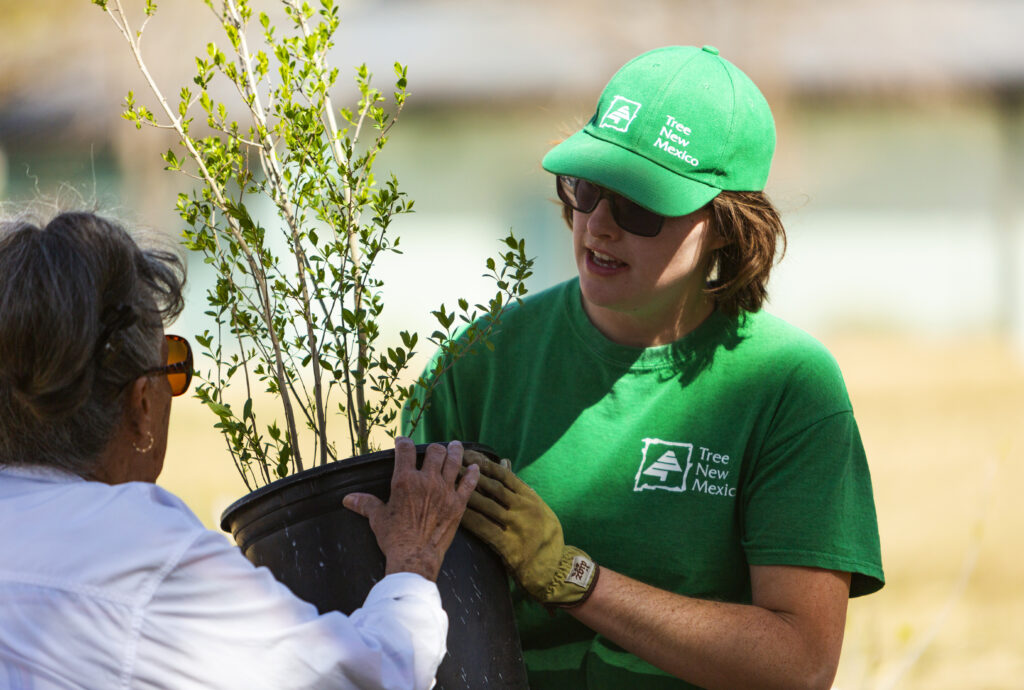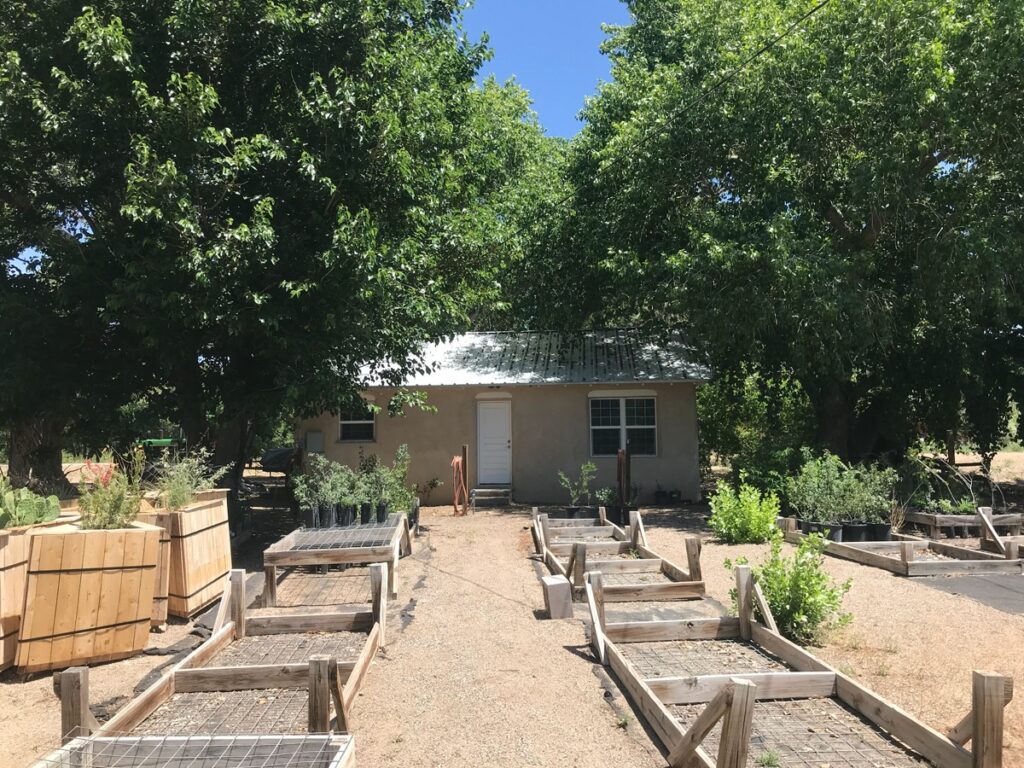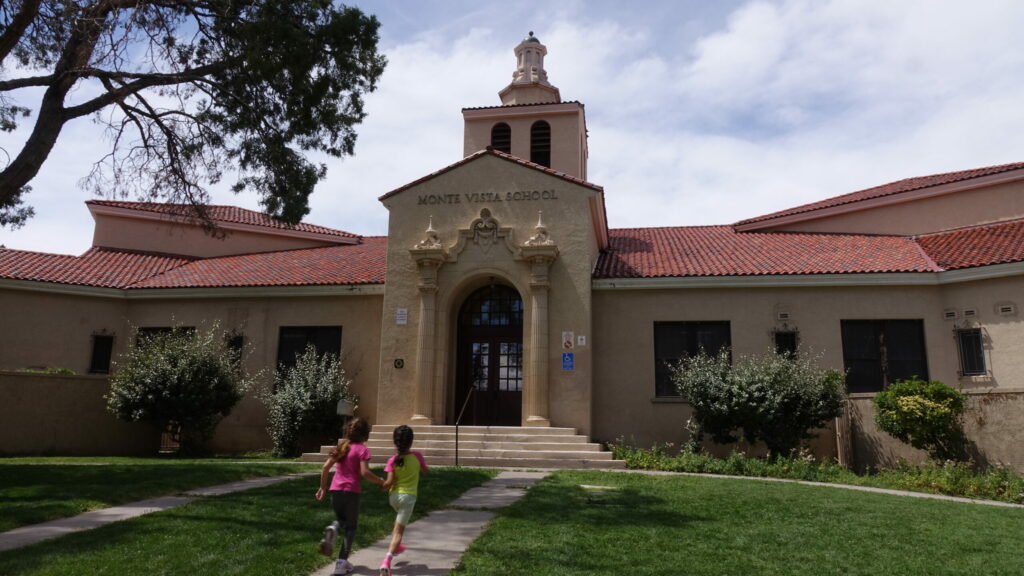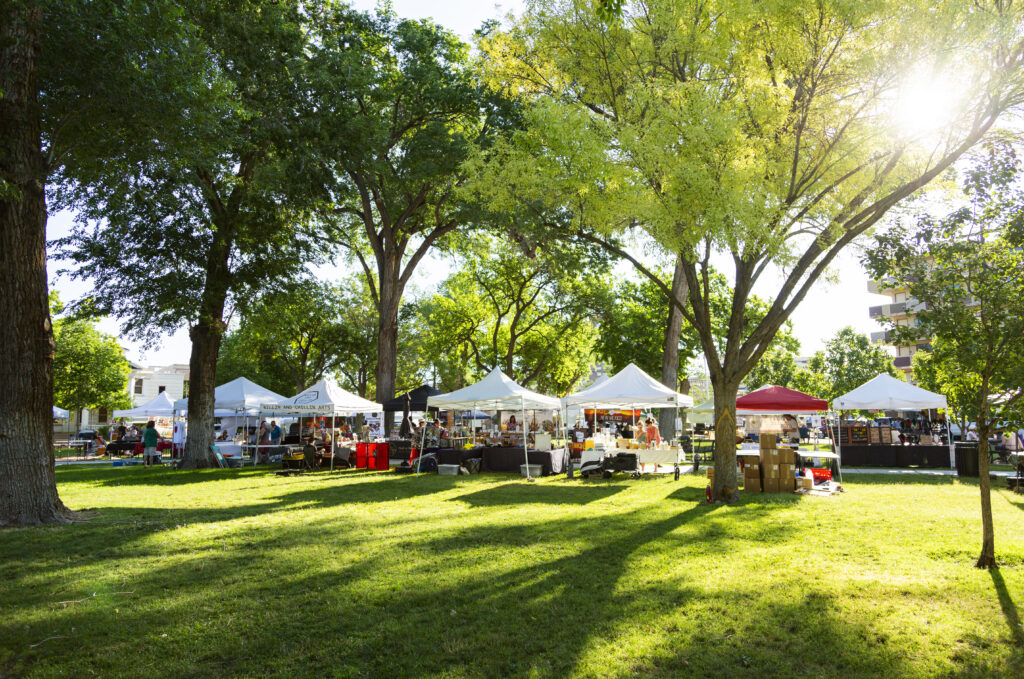My Tree, My Community

Plant a Tree,
Make a Difference
Planting a tree can have a positive impact on your community for generations to come. A greener urban canopy can help reduce the heat island effect that cities can create, improve air quality, lower energy bills by providing shade, and provide homes for wildlife. As a city, we are focused on planting trees in communities that are most vulnerable to extreme heat and areas where the urban canopy is the least dense.
You can help by taking the pledge to plant a tree in your community. Every tree planted is a step toward a green, cooler, more sustainable city.
How to care for trees
in Albuquerque
Planting a tree is just the first step. Caring for that tree to make sure it lives a long and healthy life and can shade generations of Albuquerque citizens is the true goal. Our partners at Tree NM have put together resources to help you plant and care for your new tree.

Partnering with NASA to Create a Cooler City
When it comes to planting trees, where you plant matters. The city of Albuquerque’s Department of Environmental Health, Department of Recreation and Let’s Plant Albuquerque partnered with NASA to use satellite imagery to model increases in tree canopy within the city over the next decade.
The NASA team modeled tree cover interventions and create surface temperature maps. These tools will help the City and the Let’s Plant Albuquerque team to make data-driven decisions about where to plant trees to have the biggest impact on countering the Urban Heat Island effect.
Tree Resources in Your Community
Want to learn more about trees in our city? Below are a few public resources you can tap into.
Outdoor Classroom and Tree Nursery
Outdoor Classroom and Tree Nursery


Nestled among the Rio Grande bosque the Woodward House provides an ideal environment for hands-on training and education about anything and everything tree related. The site is collaboratively managed by the City of Albuquerque and Tree New Mexico.


Tree New Mexico offers a special program for teachers, administrators and families that want to plant trees, care for trees, and learn about trees – all at their own campus. Over our 30 years, they’ve done hundreds of tree programs for youth and planted trees on campuses throughout New Mexico.


Other Ways To Get Involved
Plant at Your Apartment Complex
The power of trees should be available to everyone in our city. If you’re interested in bringing a greener canopy to your apartment complex or public housing development, get in touch. Our team can help you walk through the process.
Donate a Tree
Every dollar you donate goes to making Albuquerque a greener city. The City will partner with local organizations, such as Tree NM, The Nature Conservancy, Neighborhood Associations, civic and religious organizations, and others, to plant trees all over town, while emphasizing areas with the least tree canopy cover.
TOP CLIMATE-READY TREES FOR ABQ
Not sure about which tree is right for your space?
Talk to a tree expert with the Albuquerque Bernalillo County Water Authority.
AskAnExpert@abcwua.org
TREE CARE LEGEND






MESQUITE (HONEY & SCREWBEAN)
The various species of mesquite are trees synonymous with the desert Southwest. All are slow to leaf out in the spring, but they make up for their tardiness with fragrant yellow flowers.
Care and Maintenance
Avoid overwatering and poorly draining soil. Mesquite trees can get boring insects when stressed. Deep tap root; does not transplant well.



OAK (ESCARPMENT LIVE & CHINQUAPIN
Depending on water and soil, this evergreen oak ranges from a large shrub to a large tree with a wide-spreading crown. Deep green glossy leaves provide heavy shade and mature trees have massive trunks with thick limbs and rough, black bark.
Care and Maintenance
When drought stressed, this tree is susceptible to oak wilt and rot – be sure it gets watered deeply. Best in alkaline, well-drained soils, but tolerant of clay. Don’t be alarmed when the leaves turn yellow and drop during spring – this is expected.



CHINESE PISTACHE
Round, open crown, with excellent fall color. Females produce clusters of small green berries that turn bright red and age to dark bluish-purple. Outstanding fall foliage in shades of scarlet, crimson and orange.
Care and Maintenance
Tolerant of virtually all soil conditions except soggy clay. Young trees are ungainly and may require some pruning to form good scaffold structure and head clearance. Susceptible to cotton root rot.



NETLEAF HACKBERRY
A young Netleaf Hackberry passes through a rather ungainly adolescence, but with a little pruning, it emerges as a sculptural small shade tree that provides habitat for butterflies and songbirds as well as cooling patios and decks on a modest water budget.
Care and Maintenance
Deep roots allow its use close to walls and paving without risk. Susceptible to leaf galls, twiggy deadwood, witches broom. Requires pruning when young to ensure good form.



KENTUCKY COFFEE TREE
Kentucky Coffee Tree is a very large, tough shade tree that has become extremely popular in recent years. Parkways, front yards, and backyards are great locations for this unique and newly popular tree.
Care and Maintenance
Kentucky Coffee Tree should be grown in full sunlight. It is very adaptable to both dry and moist locations, and should do just fine under average home landscape conditions. It is considered to be drought-tolerant.


CHASTE TREE
Multi-branched, spreading large shrub or small tree that features distinctive dark green palmate leaves. Its low open form can be pruned to grow more treelike to create a small and lovely shade tree. In mid-summer a profusion of 7-inch-long blue flower spikes creates a sweet aroma that attracts bumblebees.
Care and Maintenance
Does best in hot areas. This tree has brittle wood and suckers.



CEDAR (ATLAS AND DEODAR)
Layered conical branching with distinctive blue-green foliage. This tree offers dense shade and provides a unique form and texture for the landscape.
Care and Maintenance
Young trees are susceptible to freeze damage.


ELM (ACCOLADE AND FRONTIER)
A smaller elm tree with beautiful reddish-purple fall color. It is upright, with pyramidal growth. Leaves are dark green and smooth; it is extremely hardy. The best part is it produces no seeds!
Care and Maintenance
Fast-growing and resistant to many typical elm diseases and insect problems. A perfect replacement for Albuquerque's common Siberian elm tree!



APRICOT
Genus includes many of the commonly grown stone fruits in home gardens. These include peach, apricot, almond, cherry, nectarine and plum.
Care and Maintenance
Susceptible to scale, aphids, twig and trunk borers. Crown gall, bacterial canker, bacterial leaf spot, and nematodes can also be issues. Frequent bird and insect damage to fruit. Fruiting can be unreliable due to late frosts.



CRAPE MYRTLE
This shrub or small tree is usually multi-stemmed with attractive tan and cream mottled bark and upright growth. Clusters of showy flowers bloom in the summer on branch tips of the current year's growth.
Care and Maintenance
Can suffer from marginal leaf burn due to heat or salt damage, as well as powdery mildew. Avoid spray irrigation.


RUSSIAN HAWTHORN
Compact shrub with glossy, leathery leaves covered with pink or white flowers in the spring. Panicles of dark-blue fruit follow flowering.
Care and Maintenance
Aphids occasional problem. Leaf spot also occasional problem.


OKLAHOMA REDBUD
Beautiful, showy pink blossoms line naked branches before leaves emerge in spring. Dark green wavy leaves and purplish seed pods prolong color display into summer. Edible flowers.
Care and Maintenance
Leaves may be damaged by leaf cutter bees. Suckers.


NEW MEXICO PRIVET
Multi-trunked, upright and vase-shaped, maturing into a rounded shrub with pale gray bark on sharply branching limbs. Leaves are small and bright green. Early spring flowering clusters of tiny yellow-green, fragrant blossoms. Female plants produce numerous small fleshy blue-black fruit ripening in late summer.
Care and Maintenance
Can be pruned into small tree after main trunks are developed. Leaf cutting bees. Drought deciduous. Slightly messy fruit.



AFGHAN PINE
Pine trees provide visual interest in a landscape and much-needed greenery in the coldest, most barren months. Afghan Pine is one of the best desert pines. Its evergreen leaves (needles) grow in pairs and reach 5-6 inches long. This relatively fast-growing tree is great for windbreaks and for creating a “visual screen” between properties.
Care and Maintenance
Cannot tolerate temperatures below 0 degrees F. Thrives in heat, wind and poor soil. It is relatively drought tolerant.



DESERT WILLOW
A sturdy, heat-loving tree that’s native to warm deserts. Compact and shrubby, its leaves are long and thin and its profusion of pink trumpet-shaped flowers puts on quite a show. Long, pencil-like pods give the tree year-round character. Fast growing as a young tree, its growth slows as it matures.
Care and Maintenance
Grows well in New Mexico’s lowlands, but may not be suited to elevations above 5,500 or where its cold hardiness is challenged.

